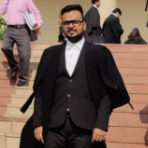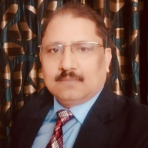Doctrine of Originality in Copyright
Posted On : March 22, 2022

Table of Contents
Copyright Registration Can Only Be Granted To Original Artistic Works That Satisfy The Test Of Originality u/s 13(1)(a) Of The Copyright Act, 1957
What is the Test of Originality?
Section 14(1)(a) of the Copyright Act, 1957 states that copyright in case of the original musical, literary or dramatic work, provides authorization, firstly, to the artists to recreate their new products and store them by electronic means, secondly, to issue copies of their creation which are not in circulation to the people, thirdly, to perform events and organize platforms for the public, fourthly, to create a film and soundtrack for promotion and other purposes of their work, and fifthly, to create translations and adaptations of the product.
In the Polo/Lauren Company LP v. Sandeep Arora & Ors., the Delhi High Court stated that while seeking registration from the Registrar of Copyrights for an artistic work mentioned u/s 13(1)(a) of the Copyright Act, the application must include a certificate, for the said work that could be copied or used in services, from the Registry of Trademark u/s 3 of the act saying that the artistic work subjected to Trademark is not deceptive.
In Entertainment Network (India) Ltd. v. Super Cassette Industries Ltd., the court observed that S. 13(1)(a) protects Originality in the work of an artist whereas S. 13(1)(b) and S.13(1)(c) protects the other unoriginal works. S. 14(1)(a) talks about the original work done by people whereas S.14(1)(e) of Copyright Act, 1957 works as a contract and is for cinema and recordings which is a restrictive area in the copyright act and this section is applied to this field.
Contact IP Rights Lawyers in your location.
Doctrines: Sweat of the Brow, Modicum of Creativity and Doctrine of Merger
Thought, the term “Originality” has not been defined specifically but there are doctrines that try to define Originality as a concept.
The Sweat of the Brow Doctrine
The doctrine of Swear of the Brow is referred to when the court gives more emphasis on the efforts and labour that was put in to make that product rather than the originality in the product or how original is the product in that sense. In Walter v. Lane, the issue was whether the oral speech of the verbatim production in the report of the newspaper was copyrightable? The court considered the efforts made by the reporter for reporting the oral speech and recording it, the court stated that, firstly, the report made by the reporter was copyrightable as the report was the result of the reporter's skill and efforts. And secondly, it doesn't matter whether work is having any meaning or not, it's accurate or not, it has merit or not, if the work is committed with originality, skill and labour, it's subject to copyrightable.
It was observed in the case of University of London Press Ltd. v. University Tutorial Press Ltd., that the idea must be original, the being of an idea or thought as revolutionary or outstanding is not important. If a person wants to have her/his product copyrightable, the only this required is the Originality in their artistic work. The Indian courts have given more emphasis on the labour and efforts that a person put to advance that idea in enforcement rather than the originality or novelty in the idea. Though, In Kartar Singh Giani v. Ladha Singh, the Supreme Court stated that the advancements and incorporations to the existing work are always welcomed and that must be matter to "Originality."
Also read about Cyber Space IP Issues.
The Doctrine of Modicum of Creativity
This doctrine requires a minimal level of creativity in the artistic work to make their product copyrightable. In 1884, the US court gave credits to the author for the creativity and newness of his article and piece of writing. This recognition was later emphasized on the judgment of Burrow-Giles Lithographic Co. Sarony. Later in 1903, the US court in the case of Bleistein v. Donaldson Lithographing Co. dismissed this notion and observed that the Originality must be determined based on merits in the artwork. The criteria for Originality in the artistic work was the uniqueness while making that art and even the single copy of that work would be in result to the notion of work of that artist and no other person. The presence of the artist's expression was observed as a work credible to Copyright and the creativity of the person was not considered. The Bleistein test was later on examined in the case of Alfred Bell & Co. v. Catalda Fine Arts, Inc., and US Courts observed that the test is valid when the author is trying to create some additions or advancement in other artist’s work instead of working on something original of his own.
In Feist Publications v. Rural Telephone Service, the courts enhanced restrictions and raised the bar of "Originality" in the creative artistic products. The courts observed that a minimal level of creativity is needed by an artist in addition to putting efforts independently. The courts stated that copyright protection can only be granted when the work and creativity are original in the making of art and not merely presenting the works differently.
Merger Doctrine
This doctrine states that where the thoughts and expression are connected and unintelligible together, Copyright protection cannot be provided to those works. The courts have denied at times in giving copyright protection to the products where the idea and expression can convey only one message or act in a very controlled manner because the copyright protection is provided to items and products like these, that will affect the market because then they will act as a monopoly.
In Baker v. Seldon, useful art rights are protected only in Patent law and not in Copyright law. The question that arose in front of US courts was whether the merger doctrine acts as a defence for preventing the protection of Copyright but it has been observed that this doctrine has acted as an assertive defence in copyright infringement cases. In Chancellor Masters of Oxford v. Narendra Publishing House, it was observed by the Supreme Court of India that the mathematical equations are categorized as laws of nature and such laws can be expressed only in limited ways as there are very few mediums of languages from which the mathematical equation travels. Therefore, the questions to the laws of nature would deny the possibility of raising questions and that will prevent the main objective of Copyright law, i.e., originality and creativity in the ideas and creativity. The court was hence of the view that such questions aren't extended to copyright.
In CCH Canadian Ltd. v. Law Society of Upper Canada, the Supreme Court of Canada stated that the doctrine of Sweat of the Brow is a low standard approach to establish originality as the holding of the court are mostly in favour of the owner due to the public affairs, and the doctrine of a modicum of creativity's standards are relatively high as the creativity must in subject to non-obvious and novel. The provision of this doctrine mostly implies in Patent law and not in Copyright law.
Margin of Originality
There is a certain limit mentioned in the copyright law for the concept of originality that whether specific work can be copyrighted or not. This margin enables to determine whether the particular work that is adequately original to issue copyright protection from the other works that are not. The "Originality" here has a different meaning from what we have read above and that is it refers to the maker or originator of the artwork instead of something which never occurred or was created previously.
In Eastern Boo Company & Others v. DB Modak and Another, the appellants were the Supreme Court Case (SCC) publishers, which was a series of reports of judgments of the Supreme Court of India. It was contended by the appellants that the software created by the respondents contained the content of publication that was copied from the site of the appellants. The appellants also contended that the respondents copied headnotes, references, formatting, verification, number of paragraphs, etc. which according to appellants required efforts, commitment, skills and expenditure.
The appellants claimed that their work was original u/s 13(1) of the Copyright Act and their copyright protection was infringed by the respondent’s u/s 14(1) of the Copyright Act, 1957. The Supreme Court stated that mere copying and editing the judgments would not amount to copyright protection as it just involves labour. Although, the materials like headnotes and editorial notes would amount to copyright protection as it involves the creation of the appellants and respondents are not entitled to copy them. The Supreme Court observed that the product that is needed to be the protection of copyright need not be neither novel and non-obvious nor merely limited to labour.
The copyright holder possesses rights given under the Copyright Act, 1957 that prevent other artists to copy the art or content of the holder and if they do, those artists are entitled to pay compensation to the copyright holder. The copyright holder has entitled to 2 kinds of rights: Economic and moral. The rights of the copyright holder include reproduction, issuing copies, performing in public events, translation, any other activities for the art on which he has been issued copyright.
Conclusion
The copyright concerned person shouldn't be worried about his copyright infringement as the Copyright laws in India are strong, strict and potent. The protection of copyright that a concerned person gets is wider not only in the traditional sense but also in the modern sense. This article mentions various doctrines of originality along with the concepts from which we can determine that the term “Originality” has no specific meaning but has several arenas with which courts determine the originality in the issues of a particular concerned person. The originality hence is understandable differently in different countries in different jurisdictions.
To understand Originality in Copyright law, there’s a clash as on one side, originality means the newness in the creation of artistic work from nothing and on the other side, the author’s original ideas along with his skill and labour. Whereas on a solid note, the merger doctrine where the expression of the artist is considered to be very valuable that is merged with an idea or thought has barred the protection of copyright as it could be used in only limited ways and a restrictive manner. The bar on the "Merger" doctrine has helped several authors and artists from having a monopoly on their kind of works and also those works are now easily available to the general public. This doctrine also provides protection of copyright from facts of necessary subject matter.
Written by – Shristi Suman
BIBLIOGRAPHY
1. Section 13(1)(a), 13(1)(b), 13(1)(c), the Copyright Act, 1957
2. Section 14(1)(a), 14(1)(b), 14(b)(e), the Copyright Act, 1957
3. Polo/Lauren Company LP v. Sandeep Arora & Ors., C.O. (COMM.IPD-CR) 4/2021, I.A. No. 11085/2021 (u/o-39R-1&2) and I.A. No. 11087/2021
4. Entertainment Network (India) Ltd. v. Super Cassette Industries Ltd., (2008) 37 PTC 353 (SC)
5. Walter v. Lane (1900) A.C. 539
6. University of London Press Ltd. v. University Tutorial Press Ltd., (1916) 2 Ch. 601
7. Kartar Singh Giani v. Ladha Singh, AIR 1934 Lahore 777
8. Burrow-Giles Lithographic Co. SARONY, 111 U.S. 53
9. Bleistein v. Donaldson Lithographing Co., 188 U.S. 239
10. Alfred Bell & Co. v. Catalda Fine Arts, Inc., 191 F.2d 99 (1951)
11. Feist Publications v. Rural Telephone Service, 499 U.S. 340 (1991)
12. Baker v. Seldon, 101 U.S. 99, 25 L. Ed. 841
13. Chancellor Masters of Oxford v. Narendra Publishing House, AIR 1970 MP 261
14. CCH Canadian Ltd. v. Law Society of Upper Canada, (2004) 1 S.C.R. 339, 2004 SCC 13
15. Eastern Book Company & Others v. DB Modak and Another, Appeal (Civil) 6472 of 2004
























